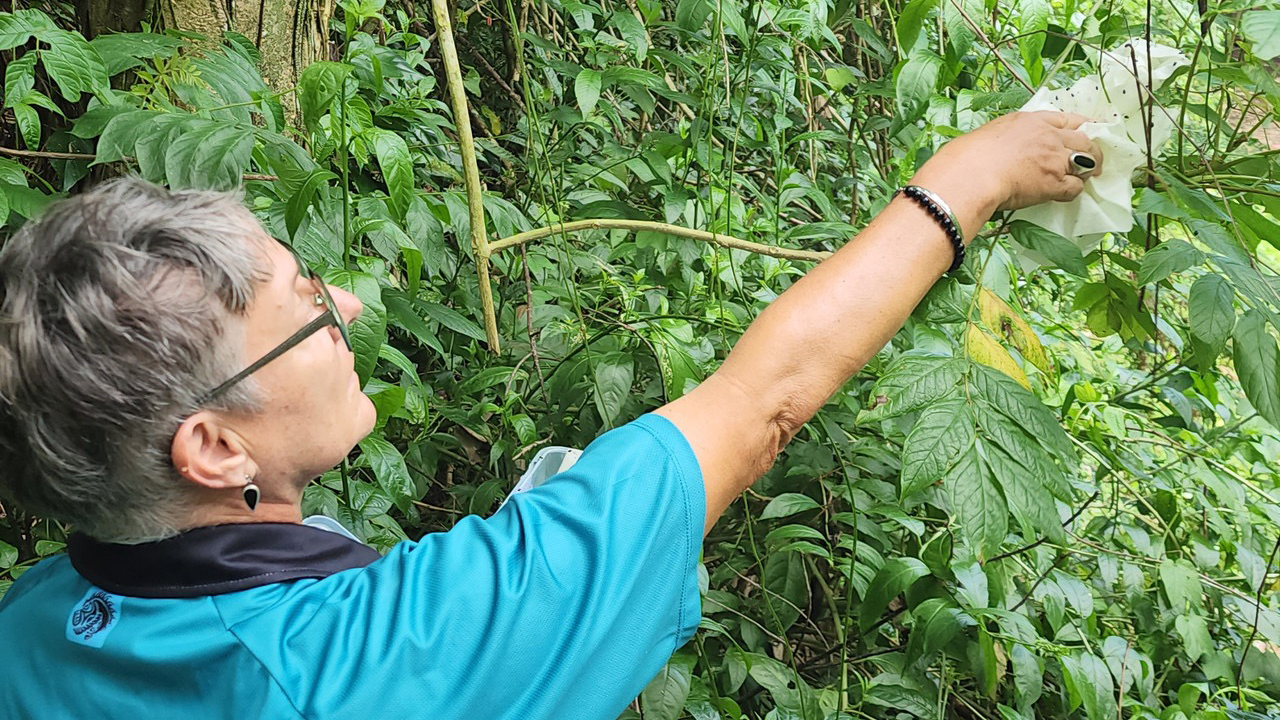A natural enemy for the invasive African tulip tree
Saturday 17 September 2022 | Written by Te Ipukarea Society | Published in Opinion

Maja releasing the second batch of flea beetle in Rarotonga. TIS/22091602
Native to South Africa’s tropical rainforests, one of the world’s worst invasive plants is under attack by flea beetles in Rarotonga, writes Te Ipukarea Society.
The African tulip tree, also referred to as the “Flame of the Forest”, appears large with orange-red flowers and yellow frilly edges. This impressive specimen was introduced into the Cook Islands in the 1920s as an ornamental flower and has long since planted its roots in the warm tropical climates.
Fortunately for the African tulip tree, it has a growing interest in the outer islands and has spread to Aitutaki, Ma’uke, Atiu, and Manihiki. However, while the African tulip tree is considered to be the most beautiful flowering tree in the world, it is also one of the world’s worst terrestrial invasive plants and is a major threat throughout the Pacific region.
Efforts to reduce the growth of the African tulip tree have been going on since 2016 when the first biological control agent was introduced to help control the spread. The first agent introduced to battle the spread of these large trees was the gall mite.
Research states that gall mites are a natural solution to stunt the growth of African tulip trees. The hope was that, because the plants are growing and spreading so rapidly, the gall mites would be able to reduce the growth of flowers and seeds dispersing.
Unfortunately, this has not been the case. As a result, a second biocontrol agent has recently been released into the wild.
The second agent to battle the “Flame of the Forest” was another small, but hopefully mighty, insect called a flea beetle. These small, shiny-coated pests, that jump like fleas when threatened, should solve the root cause of the African tulip tree's growth.
Current research shows that the flea beetle exclusively feeds on African tulip trees, which should prevent it from munching on native species to Rarotonga.
The first batch, which was released two to three years ago, was spread out across two locations – Avatiu Valley and the Takitumu Conservation Area (TCA). It has not yet been proven whether or not the first batch of beetles actually survived when they were first released in 2021.
There is much joy with a second consignment of a large number of over 500 beetles this time around. Research has stated that, although the damage by the mites does not appear to be having a significant impact, there is hope that the combined efforts of the gall mites and the flea beetles will reduce the invasiveness of the African tulip tree.
The environment that the flea beetles currently reside in are very similar to where they were sourced. They have adapted to the warm tropical climate of the Cook Islands so they should do really well here and hopefully be a solution to this widespread issue.
The overall hope is that ten years down the road we will look up to the mountains and see the Flames receding. This travel bug is not an agent that will get rid of this invasive plant in a month or a year, but maybe in five years, if this small-but-mighty flea beetle is successful, we will see some results.














































